This is a more technical explanation of how our analytical process works for those familiar with the method. There are many different ways to interpret the Five Elements; therefore, we want to add more transparency to our approach.
To analyze a person using the Five Element method, we have to combine several layers of information and examine interactions between them. It starts with Master Element (ME) and its position towards the other Five Elements. Furthermore, we must convert those Five Elements and interactions into tangible, real-life characteristics and events. Below you will find a short guide to our analytical process.
 At the time of birth, we receive one kind of energy stamp, a blueprint based on the frequencies at that given moment. In old China, astrologers observed nature and space. They realized the connection between humans and our environment, so they developed a system with Yin & Yang and the Five Elements to decipher those frequencies.
At the time of birth, we receive one kind of energy stamp, a blueprint based on the frequencies at that given moment. In old China, astrologers observed nature and space. They realized the connection between humans and our environment, so they developed a system with Yin & Yang and the Five Elements to decipher those frequencies.
The result is a birth chart comprising four pillars, representing hour, day, month, and year of birth. Each pillar consists of Stem on the top and Branch at the bottom. The Stem is always represented by an Element in its pure form, like Yin Fire, Yang Wood, etc. Branches usually have a combination of Elements, so, for example, a Dragon contains Yang Earth, Yin Water, and Yin Wood.
There are over 5 million possible combinations between Stems and Branches; therefore, this particular character profiling method offers far more details and insights than any other analysis available on the market today.
 A Master Element, or ME, represents a central point of our analysis, and it’s always positioned on top of the day pillar. ME represents the person we analyze, while all other Stems and Branches around ME represent people, situations, talents, and challenges that that person might encounter or possess.
A Master Element, or ME, represents a central point of our analysis, and it’s always positioned on top of the day pillar. ME represents the person we analyze, while all other Stems and Branches around ME represent people, situations, talents, and challenges that that person might encounter or possess.
Master Element’s ability to access and obtain Elements around them is the critical aspect of the analysis. If the surrounding is hostile, ME might not perform well. If the surrounding is positive and supportive, ME will function better, resulting in a smoother, more prosperous life.
The number of scenarios between ME and surrounding Elements is almost endless; therefore, the analyzing process is very sophisticated and often involves many contradictions that must be carefully examined.
 The Chinese zodiac animals, or Shēngxiào, is a repeating cycle of 12 years, with each year represented by an animal and its reputed attributes. Traditionally, this system was used for the farming calendar, helping farmers plan their activities, but later it became a complete prediction tool for events and people. Although primarily known as Chinese yearly zodiacs, in BaZi and Chinese astrology, we use them to track monthly, daily, and hourly cycles.
The Chinese zodiac animals, or Shēngxiào, is a repeating cycle of 12 years, with each year represented by an animal and its reputed attributes. Traditionally, this system was used for the farming calendar, helping farmers plan their activities, but later it became a complete prediction tool for events and people. Although primarily known as Chinese yearly zodiacs, in BaZi and Chinese astrology, we use them to track monthly, daily, and hourly cycles.
Each year is divided into four seasons, each further divided into three periods/months, representing each season’s beginning, middle, and end.
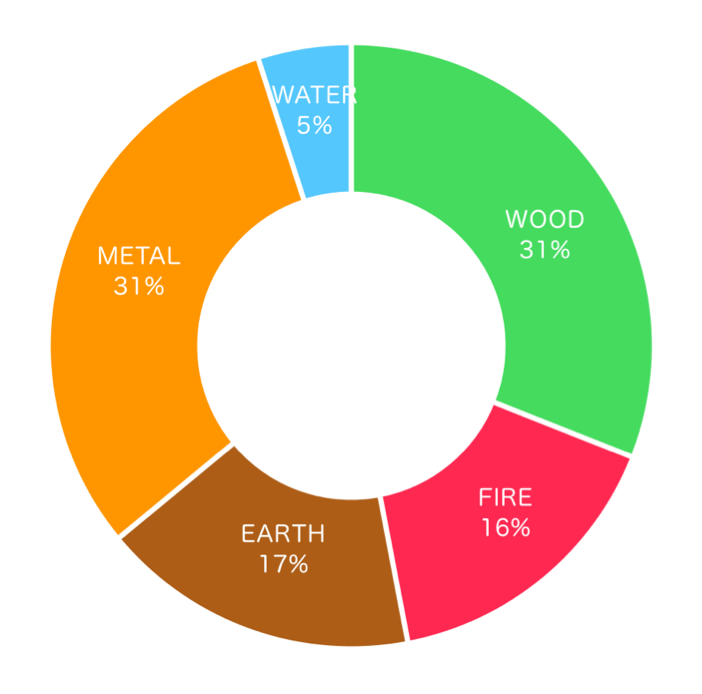 The strength of the Five Elements is derived from the Birth Chart. The Five Elements are the primary energies or universal frequencies we receive at birth and continually influence our daily lives. The Five Elements move in cycles, first discovered thousands of years ago by Chinese astrologers, who realized that everything in nature is connected and that these movements significantly determine humans’ character and life paths.
The strength of the Five Elements is derived from the Birth Chart. The Five Elements are the primary energies or universal frequencies we receive at birth and continually influence our daily lives. The Five Elements move in cycles, first discovered thousands of years ago by Chinese astrologers, who realized that everything in nature is connected and that these movements significantly determine humans’ character and life paths.
This knowledge has been further analyzed and adjusted for our modern life by hundreds of BaZi masters worldwide. The research continues and will most likely never end due to vast implications and ever-changing energy cycles.
Everything around us can be classified as one of the Five Elements and its Yin & Yang variations, including character traits, emotions, professions, and so on; therefore, an experienced analyzer can read a person’s ‘destiny,’ character traits, talents, and possible obstacles on their path.
With all that being said, a person’s destiny is not carved in stone; we still have free will to shape our destiny in our unique ways but within certain limitations given by the Five Elements blueprint. Our research concluded that roughly 50% of our character is determined by the Five Elements at that particular moment of our birth; the rest is developed through genetics, parents’ upbringing, postnatal education, surrounding, etc.
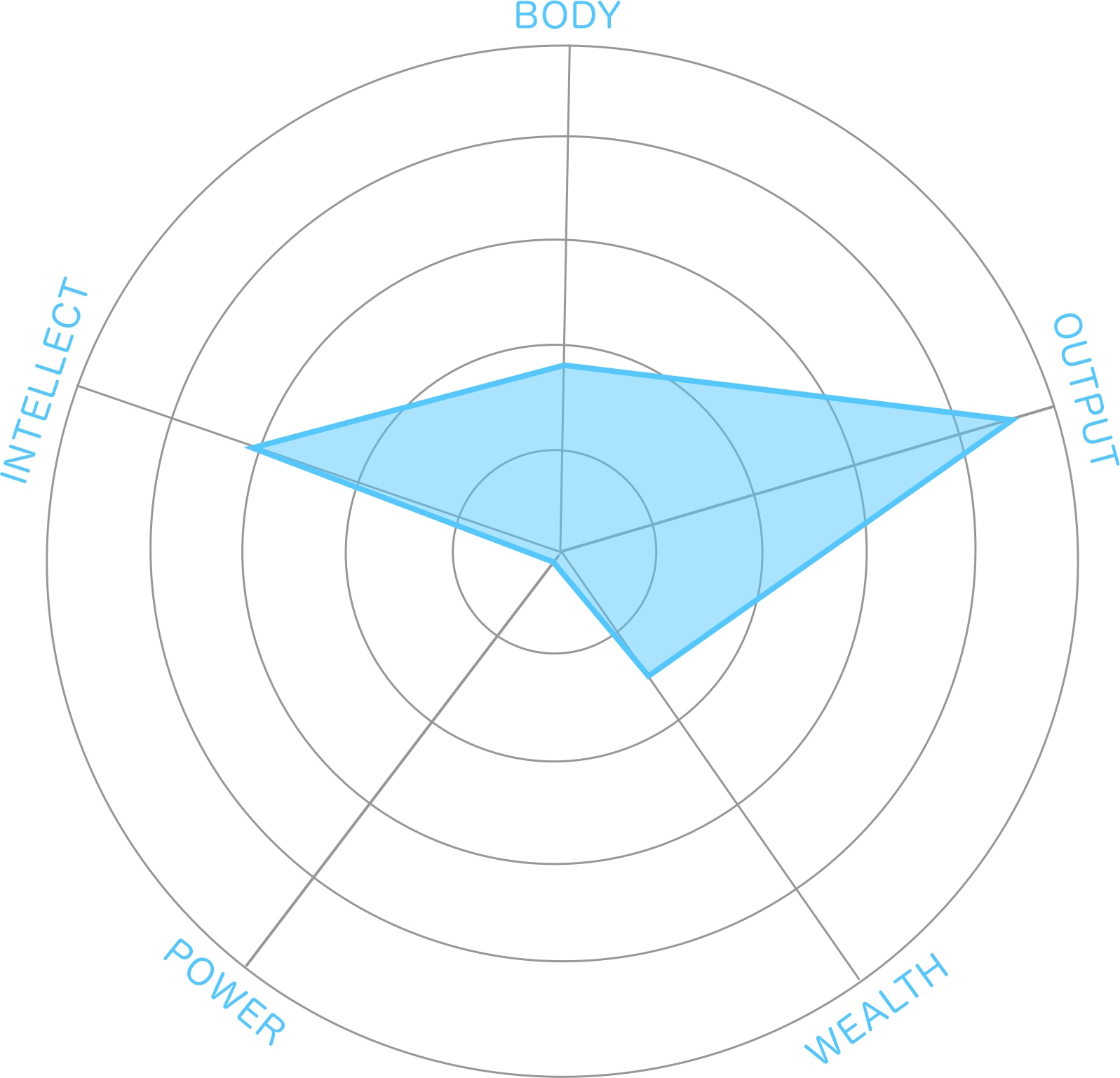 Character Components are real-life manifestations of the Five Elements. We can see them as the primary building blocks of our character. They represent our skills but also people, situations, character traits, life paths, challenges, etc. The real meaning of each Character Component is extensive and sophisticated and can be elaborated upon deeply.
Character Components are real-life manifestations of the Five Elements. We can see them as the primary building blocks of our character. They represent our skills but also people, situations, character traits, life paths, challenges, etc. The real meaning of each Character Component is extensive and sophisticated and can be elaborated upon deeply.
An entirely missing or fragile Character Component is not a good occurrence because it disturbs the flow of the chart. Missing Component puts a person in a disadvantageous position right from the beginning, but they can overcome it with the right attitude and discipline.
A missing or weak Component can be added or ‘fixed’ through Dynamic Chart; more about that in the section below.
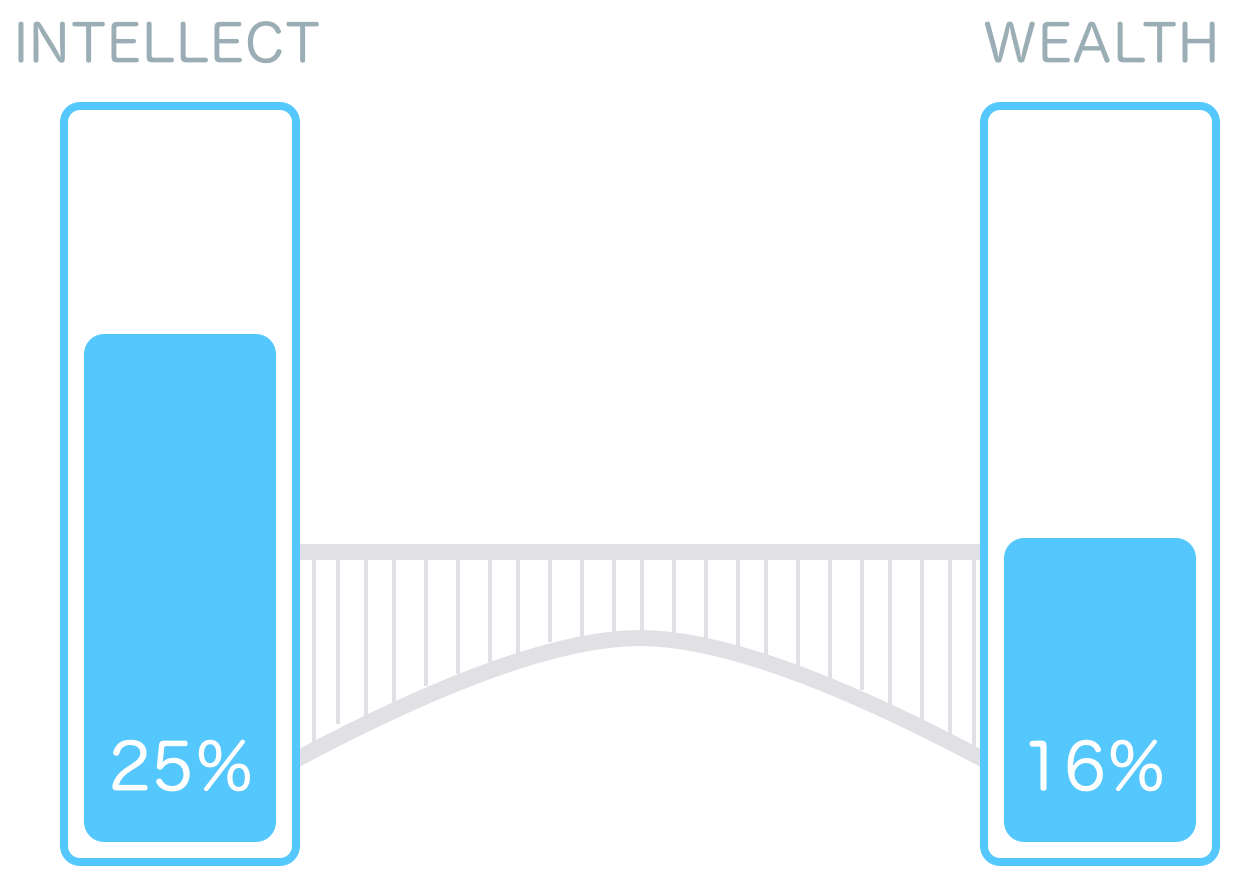 Talent Bridge represents a collaboration between two Character Components. Each Character Component doesn’t hold much value on its own, regardless of its strength, unless it’s interacting with other Components. When two Components work together in harmony and relatively undisturbed by other Components, they can bring exceptional talents and character traits to the person.
Talent Bridge represents a collaboration between two Character Components. Each Character Component doesn’t hold much value on its own, regardless of its strength, unless it’s interacting with other Components. When two Components work together in harmony and relatively undisturbed by other Components, they can bring exceptional talents and character traits to the person.
While the strength of the Character Component shows us the potential, the Talent Bridge shows us actual effectiveness. So even if a particular Component is somewhat weak but able to create a Bridge with other Components, this Component becomes extremely useful and productive.
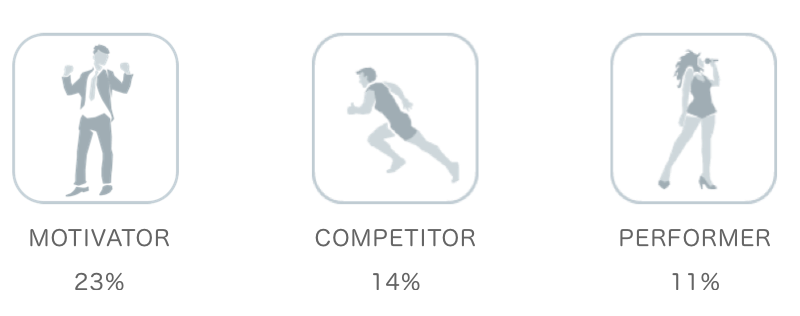 Each Character Component consists of two Talents, so there are altogether 10. We can imagine Talents as Yin and Yang variations of one particular Component, giving us a more granular look into a person’s character.
Each Character Component consists of two Talents, so there are altogether 10. We can imagine Talents as Yin and Yang variations of one particular Component, giving us a more granular look into a person’s character.
Most Charts have, on average, between 6 and 8 active Talents, but the actual number is insignificant. What is crucial is whether those Talents are in optimum performance or not. Talents can also create a Talent Bridge between each other, making them more active and generally more helpful.
A strong Talent that is not active or utilized properly by other Talents or Components will react to its negative characteristics and create problems for that person and the people around them. It’s essential to detect such negative Talents and work on self-discipline to avoid further damage.
 Supertalent is a unique chart feature that can provide extraordinary creative capabilities to a person. These abilities are almost always extroverted, like public speaking, acting, singing, or dancing. Supertalent can also show up as charisma, making us famous in our social circles and workplace. Our research found that most entertainment stars or high-level politicians have these Supertalents in their charts.
Supertalent is a unique chart feature that can provide extraordinary creative capabilities to a person. These abilities are almost always extroverted, like public speaking, acting, singing, or dancing. Supertalent can also show up as charisma, making us famous in our social circles and workplace. Our research found that most entertainment stars or high-level politicians have these Supertalents in their charts.
Supertalent can show up often as very weak in the charts, but because of its unique properties, it can ‘fix’ an out-of-balance chart and turn it into something great; therefore, its strength is irrelevant. We can imagine a Supertalent as a special spice that turns an average meal into a delicacy.
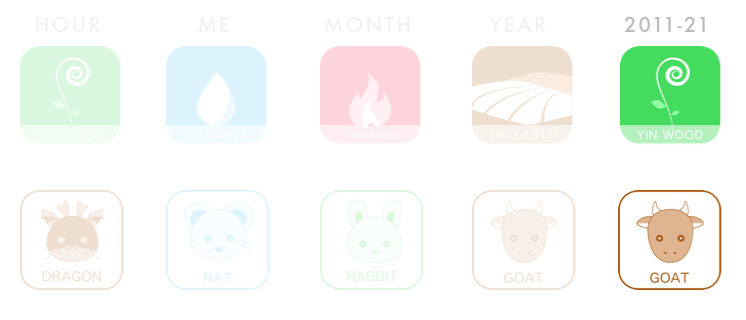 The Chart we receive at birth is called a Static Chart, which remains the same throughout our lives. But to spice things up, the universe also gave us a Dynamic Chart; we call it Dynamic Luck, which changes every ten years and varies from person to person. The Dynamic Luck consists of one currently active additional pillar with Stem and Branch.
The Chart we receive at birth is called a Static Chart, which remains the same throughout our lives. But to spice things up, the universe also gave us a Dynamic Chart; we call it Dynamic Luck, which changes every ten years and varies from person to person. The Dynamic Luck consists of one currently active additional pillar with Stem and Branch.
This pillar can completely change the dynamic of our Static Chart, for better and worse. It can activate hidden Talents, but it can also damage the active ones. This is the reason why our lives fluctuate. We have periods where we are very successful and healthy, and then we have periods where it gets challenging to move forward without encountering blockages on every corner.
It’s essential to be aware of these periods and prepare for them. By doing so, we can utilize favorable periods much better and reduce risks and damage during the less fortunate times. A Dynamic Chart is like a weather forecast; it’s good to know when it will rain or snow so that you can wear appropriate clothes; otherwise, you might get wet and cold. And if the forecast is calling for warm weather and a clear sky, it’s time to put those shades on and enjoy the sunshine.
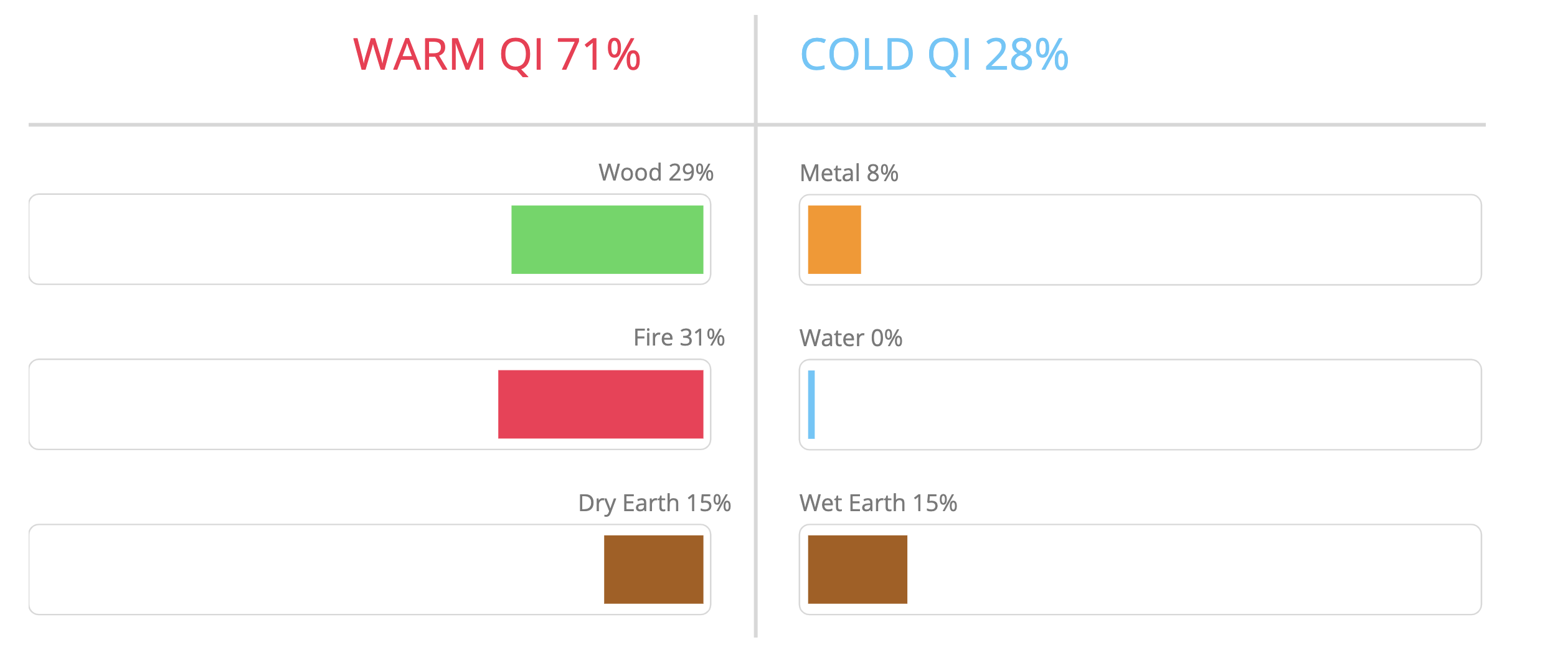 The Qi Balance module follows the Five Element dynamic but with few adjustments. The Five Elements are divided into Warm and Cold Qi, with Fire and Wood belonging to Warm, and Water and Metal belonging to Cold Qi. Using this dynamic, we can analyze the primary health condition of the person using the warm/cold and wet/dry methods, which can be applied further to organs and bodily fluids.
The Qi Balance module follows the Five Element dynamic but with few adjustments. The Five Elements are divided into Warm and Cold Qi, with Fire and Wood belonging to Warm, and Water and Metal belonging to Cold Qi. Using this dynamic, we can analyze the primary health condition of the person using the warm/cold and wet/dry methods, which can be applied further to organs and bodily fluids.
This method was, interestingly enough, used also in old Greece, discovered by the great Greek physician Hippocrates, without knowing anything about the Chinese Five Elements theory and Traditional Chinese Medicine. Although he was on the right track, the future generations of scientists rejected his ideas, so such a method never really took off in Western countries.
